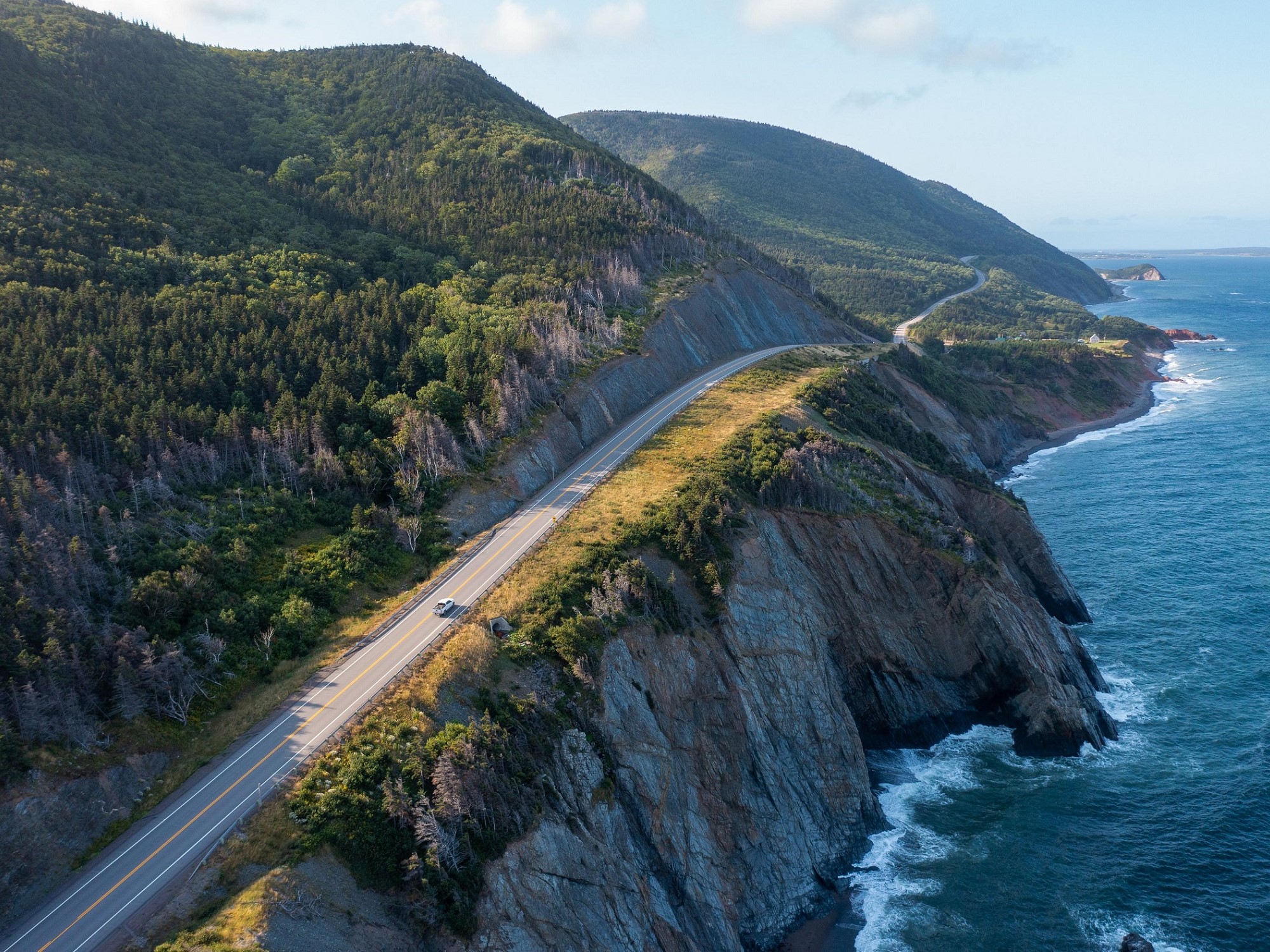If you’re dreaming of coastal cliffs, winding mountain roads, and cultural charm, the Cabot Trail in Nova Scotia, Canada is the road trip for you. Ranked among the world’s most beautiful scenic drives, the Cabot Trail stretches 298 kilometers around the northern tip of Cape Breton Island, offering a perfect mix of ocean vistas, lush forests, friendly villages, and outdoor adventure.
This loop takes you through Cape Breton Highlands National Park, where panoramic viewpoints and hiking trails are found at nearly every turn. You’ll encounter Acadian and Gaelic communities, dine on fresh Atlantic seafood, and possibly even spot whales along the coast. Whether you’re a road trip enthusiast, hiker, nature photographer, or cultural explorer, the Cabot Trail is the ultimate east coast Canada experience.
In this complete guide, we’ll explore the best time to visit, top attractions, towns you can’t miss, and expert tips to help you plan an unforgettable journey.
What Is the Cabot Trail?
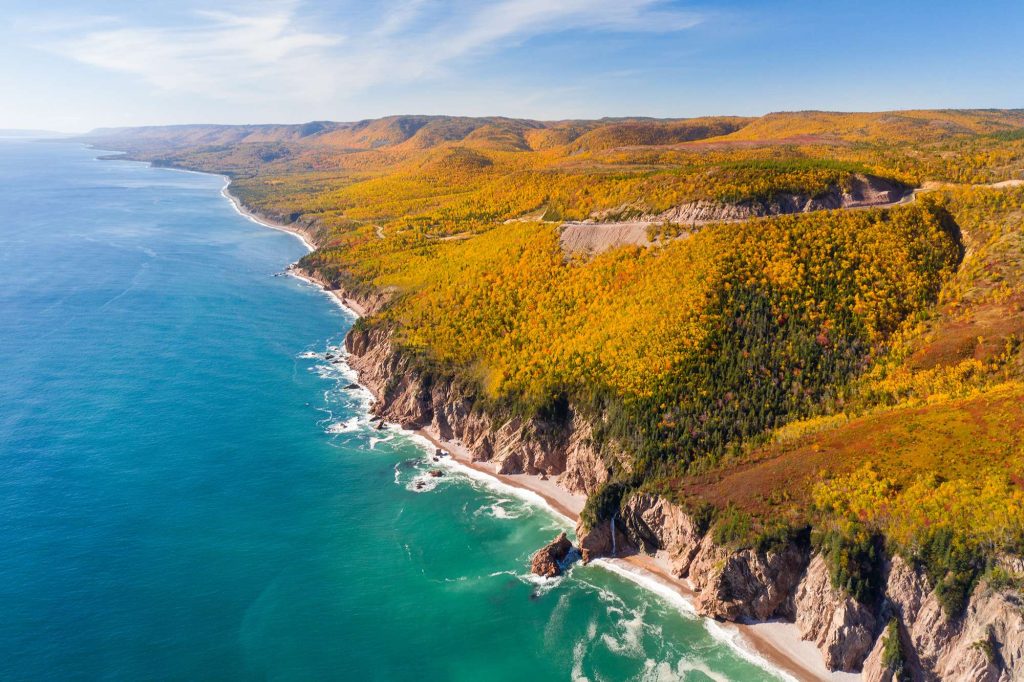
The Cabot Trail is one of Canada’s premier driving routes, looping around the rugged coastline and interior highlands of Cape Breton Island in Nova Scotia. Named after explorer John Cabot, the road weaves through some of the province’s most spectacular scenery, from cliffs dropping into the Atlantic to sweeping forested plateaus. The trail includes sections of Cape Breton Highlands National Park, famous for its lookoffs, wildlife, and hiking trails.
Driving the entire trail takes about five to seven hours without stopping, but that would mean missing everything that makes the route magical. Most travelers spend 3 to 5 days exploring its many stops. Along the way, you’ll encounter quaint towns like Chéticamp, Ingonish, and Pleasant Bay, each offering their own local culture, food, and attractions.
Beyond the scenery, the Cabot Trail celebrates the region’s Acadian, Mi’kmaq, and Gaelic heritage, reflected in local art, music, and museums. Whether you explore by car, bike, or motorcycle, the Cabot Trail offers something for every kind of traveler.
When Is the Best Time to Drive the Cabot Trail?
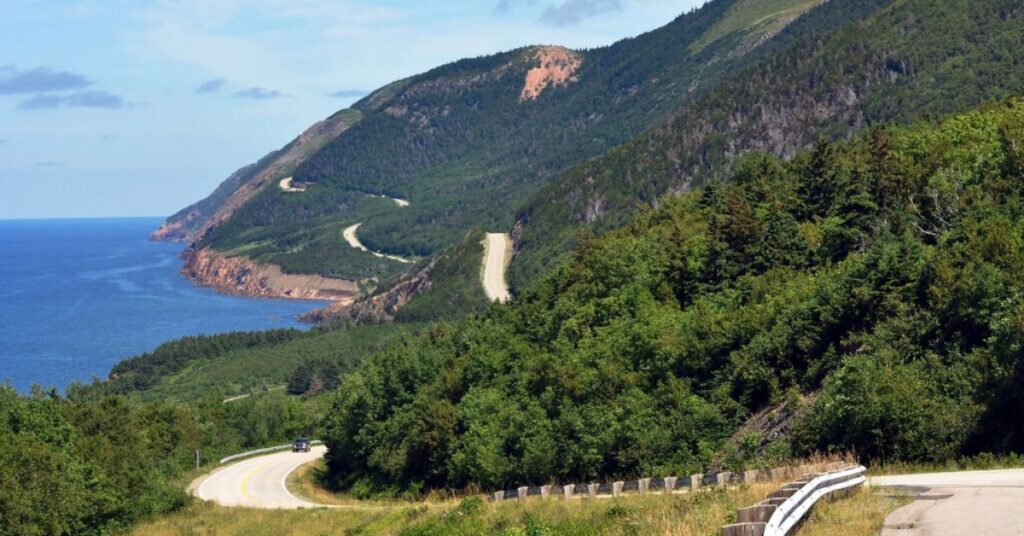
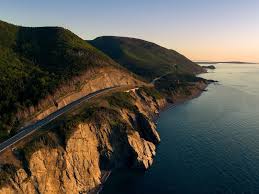
Choosing the best time to visit the Cabot Trail Nova Scotia depends on what kind of experience you’re after. Each season offers something unique:
Summer (June to August)
Summer is the peak tourist season, with warm temperatures averaging 20–25°C (68–77°F). All businesses, tours, and accommodations are open, making it the easiest time to visit. Hiking trails are accessible, and whale-watching tours are in full swing. However, this is also when crowds are at their peak, so booking early is essential.
Fall (September to Mid-October)
Fall is widely regarded as the most beautiful time to drive the Cabot Trail. The foliage transforms into a brilliant mix of red, orange, and gold, making every turn of the road a postcard moment. The air is crisp, the skies are clear, and the summer crowds are gone. If you’re a photographer or a nature lover, this is your season.
Spring (May to Early June)
Spring offers blooming wildflowers, rushing waterfalls, and quiet roads. It’s a peaceful time for a visit, but some seasonal businesses may not yet be open. Wildlife viewing, especially moose and eagles, is excellent in spring.
Winter (November to April)
While the trail remains open year-round, winter driving can be treacherous due to snow, ice, and limited services. Winter travel is only recommended for experienced drivers or locals. Some sections may be closed due to weather.
Top Places to Visit on the Cabot Trail

Cape Breton Highlands National Park
Covering much of the northern half of the trail, Cape Breton Highlands National Park is the heart of the Cabot Trail. This protected wilderness area is known for its dramatic cliffs, deep valleys, and highland plateaus. It offers 26 marked hiking trails, scenic picnic areas, campgrounds, and abundant wildlife.
The most iconic hike is the Skyline Trail, a relatively easy loop that ends at a boardwalk overlooking the Gulf of St. Lawrence. Moose sightings are common, and sunsets here are jaw-dropping. Other must-try hikes include the Franey Trail, which rewards you with panoramic views of the Atlantic and the Clyburn Valley, and the Acadian Trail, which is moderately challenging and offers sweeping views over Chéticamp.
The park also features beaches, waterfalls, and the only part of Nova Scotia where you can see both boreal and Acadian forest. Don’t miss the look-offs like MacKenzie Mountain and Veterans Monument for panoramic views.
Chéticamp: Acadian Culture and Coastal Charm
On the western side of the Cabot Trail, you’ll find Chéticamp, a colorful Acadian fishing village rich in culture and heritage. The town is known for its vibrant music scene, traditional rug hooking, and warm hospitality. French is widely spoken here, but locals are equally fluent in English.
Start your visit at Les Trois Pignons Cultural Centre, where you’ll learn about Acadian history and see stunning examples of hooked rugs—an art form deeply rooted in the community. During the summer months, Chéticamp hosts Acadian festivals, complete with music, dancing, and local food.
For dining, try seafood chowder, lobster rolls, or Acadian meat pie. The harbor is especially beautiful at sunset, and the nearby Gypsum Mine Lake is a hidden gem with turquoise water perfect for swimming or photos.
Chéticamp is also a gateway to the national park, making it a great base for hiking and exploring.
Pleasant Bay: Whale Watching and Rugged Coastline
Halfway around the trail, you’ll come across Pleasant Bay, often called the whale-watching capital of Cape Breton. Nestled between the mountains and the ocean, this small village is the ideal place to take a marine wildlife tour.
From June to October, whale watching tours depart daily, and you can see humpback, minke, fin, and pilot whales—sometimes even dolphins and porpoises. Tours usually last 1.5 to 3 hours and are suitable for all ages. For a deeper understanding of marine life, visit the Whale Interpretive Centre, which features interactive exhibits and whale skeletons.
Aside from marine attractions, Pleasant Bay is a great place to hike rugged coastline trails and explore quiet beaches. Its dramatic cliffs offer some of the most photogenic lookouts on the trail. Despite its size, the town offers cozy inns and seafood restaurants, making it a perfect overnight stop.
Ingonish: Adventure and Relaxation on the Eastern Coast
Ingonish is one of the most visited communities along the Cabot Trail, offering a mix of adventure, natural beauty, and relaxation. Located near the eastern entrance of Cape Breton Highlands National Park, Ingonish is known for its beaches, golf, and the Cape Smokey Gondola.
The Cape Smokey Gondola provides breathtaking views as it ascends the mountain—perfect for spotting eagles, foliage, or the blue Atlantic below. In winter, the area transforms into a ski resort, making it a year-round destination.
Golf enthusiasts can play at the world-famous Highlands Links, designed by Stanley Thompson. It’s one of the most scenic golf courses in North America, combining mountain and coastal views.
If you’re in the mood for nature, explore the Middle Head Trail, a scenic peninsula walk with coastal cliffs and forest paths. Black Brook Beach is a great swimming spot in summer, and the calm bay is perfect for kayaking.
Tips for Driving the Cabot Trail
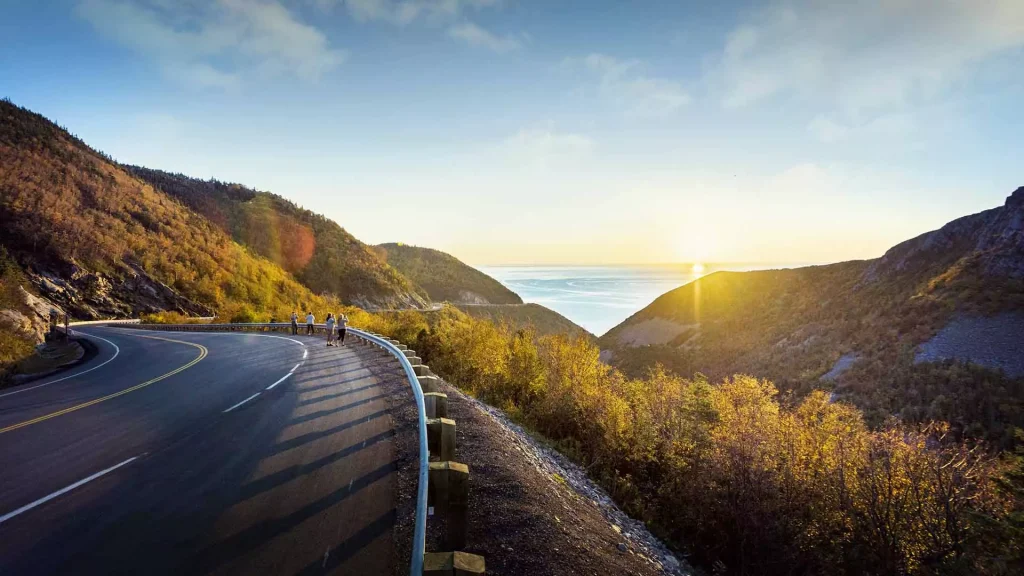

- Plan 3–5 days to enjoy everything without rushing.
- Drive clockwise for better access to roadside viewpoints and ocean views.
- Book accommodations in advance, especially in July–August and peak fall foliage season.
- Gas stations are limited—fill up in major towns like Baddeck, Chéticamp, and Ingonish.
- Use offline maps or GPS devices—cell coverage is spotty in the highlands.
- Bring layers, even in summer. Coastal and highland weather can change quickly.
Conclusion: Why the Cabot Trail Should Be on Your Bucket List
The Cabot Trail Nova Scotia is not just a road—it’s an unforgettable journey through natural beauty, cultural richness, and maritime hospitality. From the soaring cliffs of Cape Breton Highlands National Park to the music-filled villages of Chéticamp and the serene beaches of Ingonish, every stretch of this loop tells a story.
Whether you’re hiking with moose, dining on lobster, watching whales, or standing at the edge of a cliff at sunset, the Cabot Trail delivers moments of wonder and peace. It’s one of those rare destinations that invites both excitement and reflection—and keeps calling you back.
Make sure your next road trip includes this world-class route. You’ll leave with incredible photos, lasting memories, and a piece of Cape Breton in your heart.

